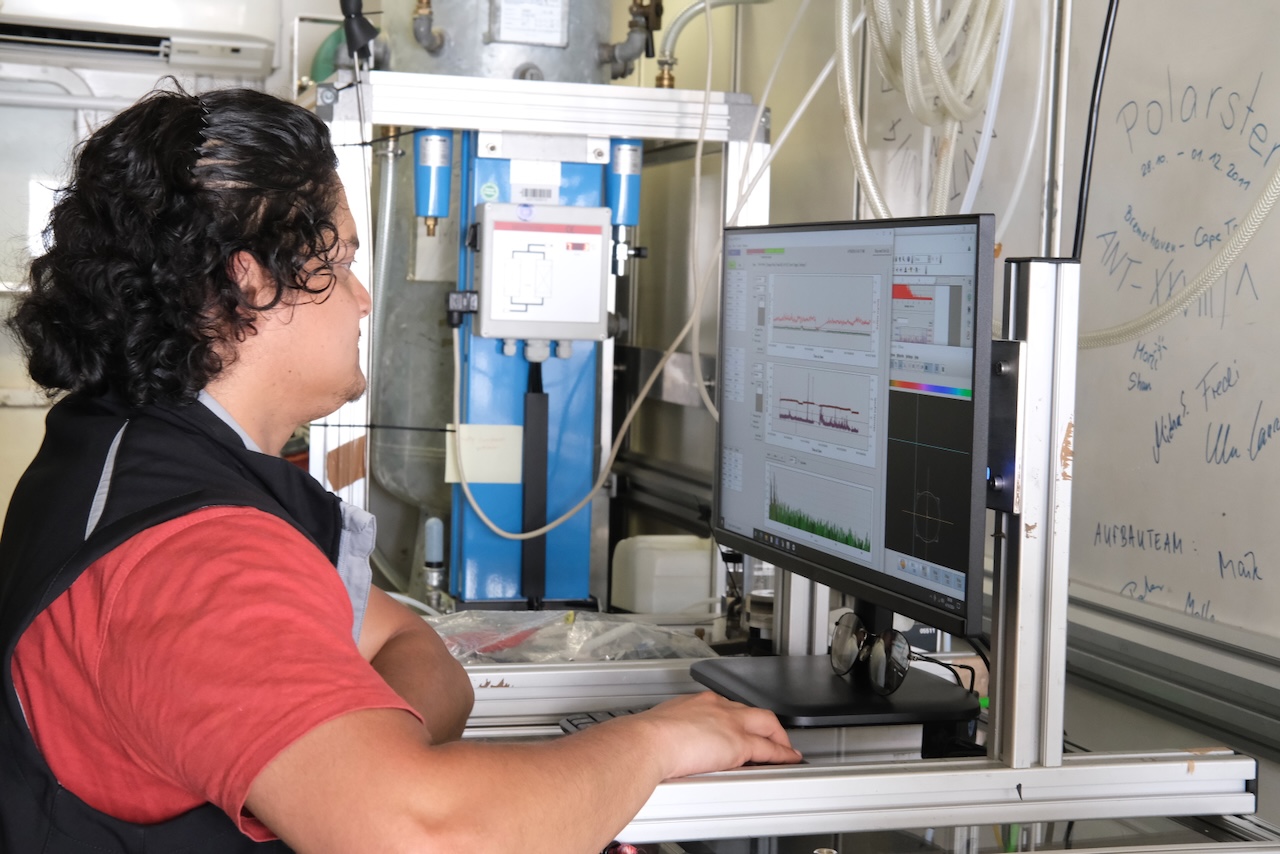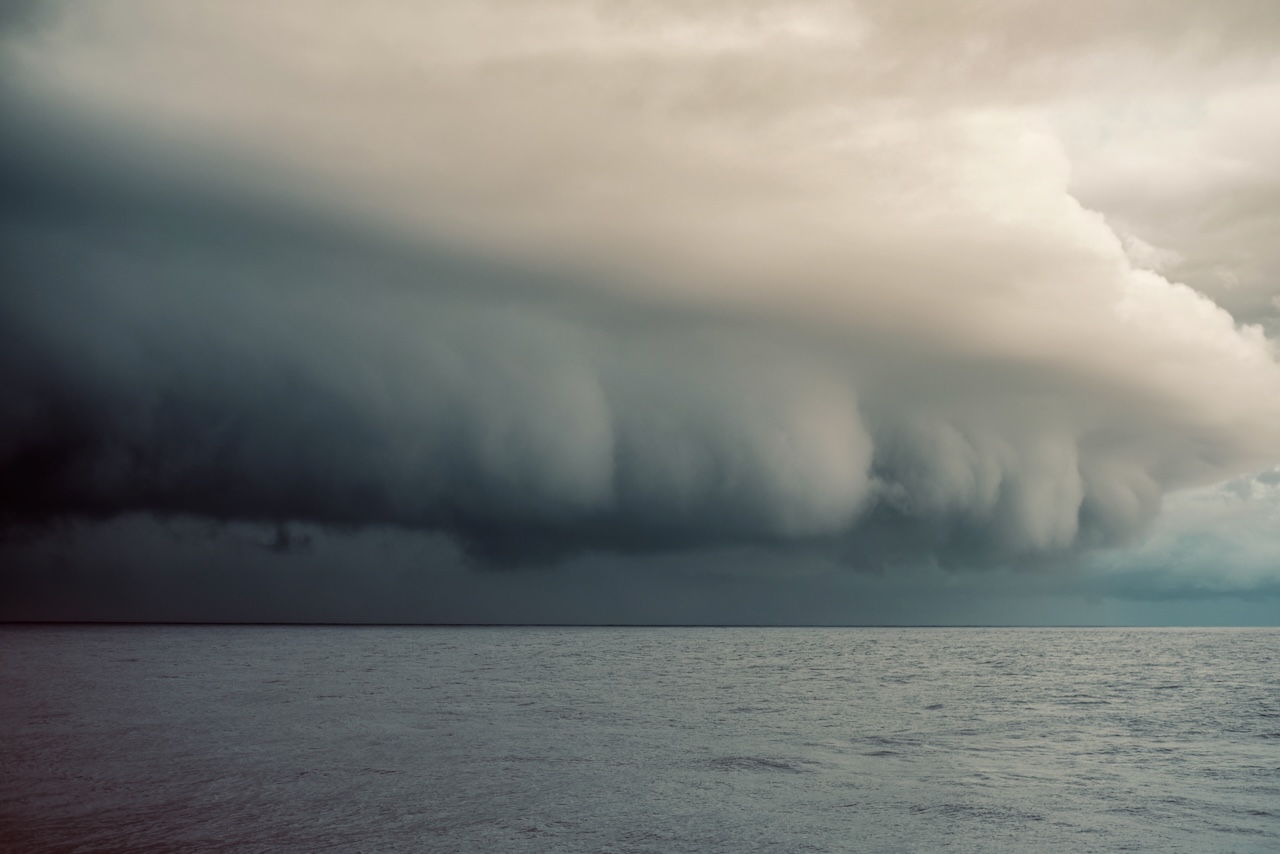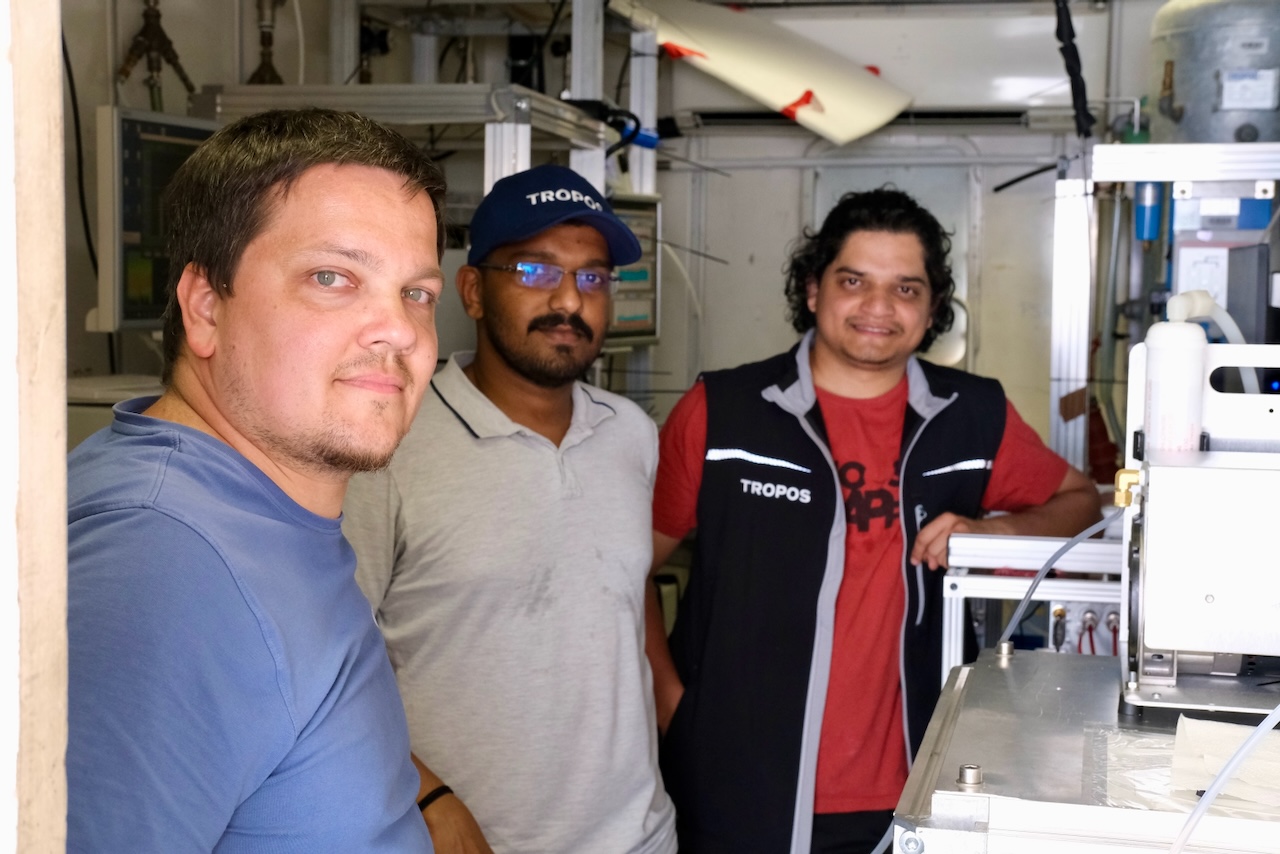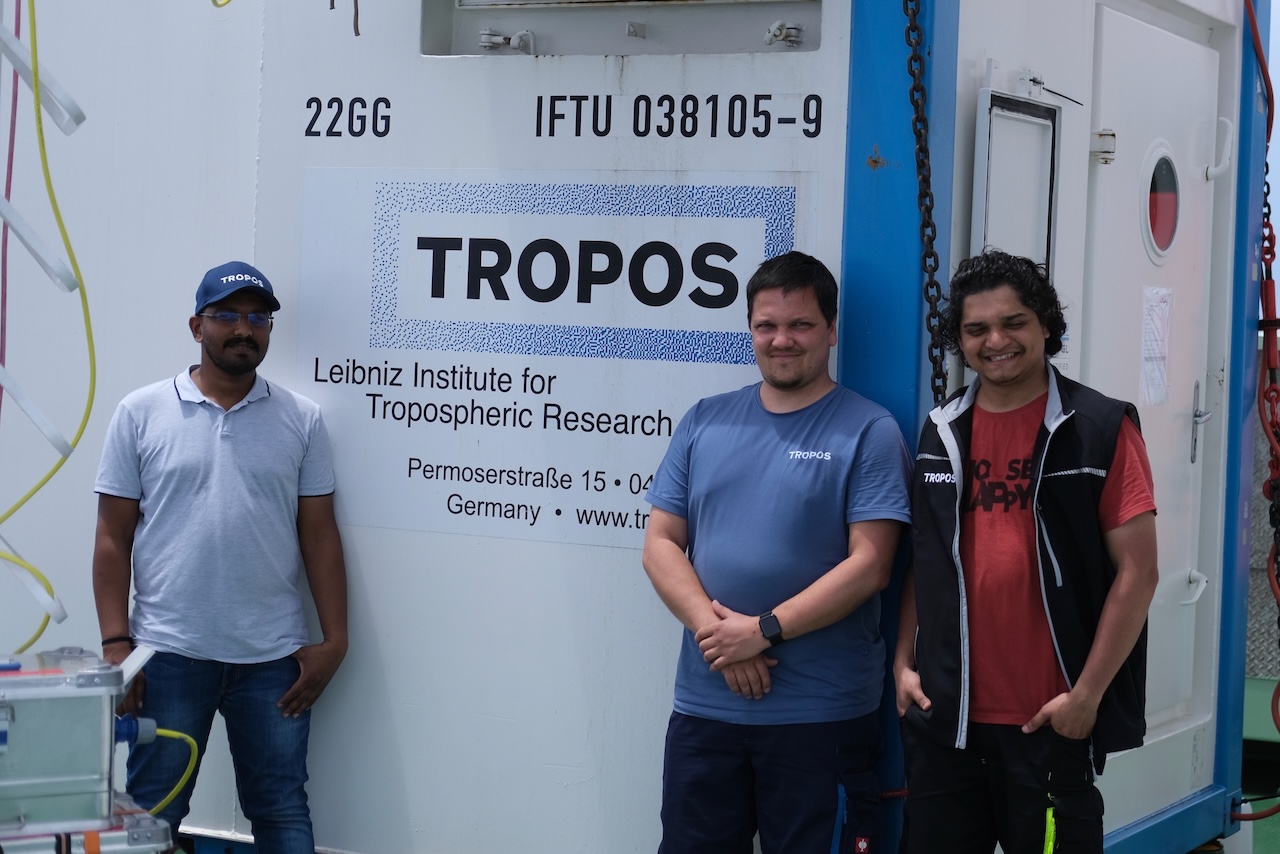by Dr. Arun Babu Suja
Greetings from the high seas by the TROPOS scientific team! Our mission during the BIOCAT-IIOE2 cruise is to delve into the fascinating world of atmospheric aerosols – those tiny particles suspended in the air – and unlock their secrets. These tiny particles suspended in the air hold immense significance in shaping our planet’s climate and ecosystems. Our mission is to unravel their mysteries, focusing on their interactions with clouds, radiation, and the ocean itself. Our adventure started with the collection of aerosol samples from the air around us. Using advanced techniques, we capture these minuscule particles and analyze their composition, size distribution, optical properties, and sources. It’s like discovering hidden treasures in the atmosphere, with each particle offering clues about its journey and the forces that shape our skies. But our exploration doesn’t end there.

We’re also investigating the sea surface microlayer (SML), the thin boundary between the ocean and the air above. Here, we’re taking samples to study how aerosols interact with the marine environment, unlocking insights into the complex relationship between the ocean and the atmosphere. Furthermore, our exploration encompasses measurements of black carbon (BC) concentrations, a potent climate-forcing agent with far-reaching impacts on atmospheric heating and regional climate variability. By quantifying BC emissions and their spatial distribution, we aim to elucidate their contributions to radiative forcing and regional climate trends. In our pursuit of a holistic understanding of aerosol-cloud interactions, we also conduct measurements of cloud condensation nuclei (CCN) concentrations. These microscopic aerosol particles serve as nuclei for cloud droplet formation, influencing cloud microphysics, precipitation patterns, and regional climate dynamics.

Moreover, our scientific voyage comprises investigations into ice nucleating particles (INPs), which play a pivotal role in cloud glaciation processes and precipitation formation. By characterizing INP concentrations and their ice nucleation efficiency, we aim to elucidate their contributions to cloud properties, precipitation regimes, and atmospheric circulation patterns. Through interdisciplinary collaboration and rigorous scientific inquiry, we endeavor to advance our understanding of aerosol science, thereby enhancing our capacity to address pressing environmental challenges and mitigate the impacts of global climate change. Every sample we collect and every measurement we take brings us closer to unlocking the secrets of aerosols and their impact on our planet.

